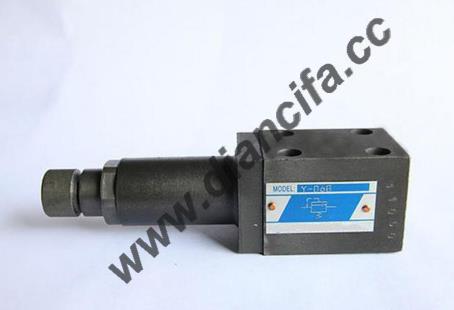The relief valve generally has a set pressure. Check it on the system display or with a pressure gauge. Does it reach the set pressure value when the system overflows? If it can be achieved and is stable, it should be good. If it cannot be achieved, you can clean it once or adjust it < span style="color:#4C33E5;">Adjust the nut on the relief valve to see if there is any change in the pressure value. If it can be reached, it is fine. If it is still reached after adjustment If it is less than, or cannot reach stability, it can be determined that the relief valve is faulty and needs to be repaired or replaced.
Common faults of relief valves
1. Noise and vibration: This problem is particularly common in relief valves. There are many factors that produce noise, including uneven pressure, cavitation, hydraulic impact and mechanical noise. If a high-pressure and large-flow type relief valve is used, the vibration and noise problems will be more severe.
2. Pressure fluctuation: This fault is prone to occur in the relief valve. It may be a problem of itself or a joint effect of the oil pump and the system.

3. Invalid pressure adjustment: This situation generally refers to no pressure, the pressure cannot be adjusted up, or the pressure increases too quickly. Usually, the correct way to adjust the pressure of the hydraulic station is to first adjust the overflow The flow valve is fully open (that is, the spring is not compressed). After starting the oil pump, slowly tighten the pressure regulating button (the amount of spring compression gradually increases), and the pressure will rise steadily. If the pressure of the oil pump rises rapidly after starting and cannot be stopped, you can It is determined that the relief valve has not opened or is faulty.
4. Oil leakage: This fault can be divided into two categories: internal leakage and external leakage. External leakage generally causes pollution to the environment, so it is easy to be discovered, but internal leakage Because the problem is not easy to detect, the problem often causes increased noise and obvious pressure fluctuations.
5. Other faults: During assembly or use of the relief valve, damage to the O-ring and combined sealing ring, or loosening of the mounting screws and pipe joints may occur. Cause undue external leakage. If the poppet valve or main valve core is worn too much, or the sealing surface is in poor contact, it will cause excessive internal leakage and even affect normal operation.
ElectromagneticRelief valveCommon faults include pilot solenoid valve failure, main valve pressure regulation failure and impact noise during unloading, etc. The latter can be reduced or eliminated by adjusting the added buffer. If there is no buffer, a back pressure valve can be added to the main valve overflow port. (The pressure is generally adjusted to about 5kgf/cm2, that is, 0.5MPa).






 WhatsApp: +8615857777578
WhatsApp: +8615857777578